Kristin used to hang out on Capri and the Costiera Amalfitana, in the old days, but we've never been, and it's time. So here we go for a couple of weeks in fall 2010 for the off-season prices.
You
may not find this terribly rewarding unless you're included here, so this
is a good time for casual and random browsers to turn back before they
get too caught up in the sweep and majesty of the proceedings and can't
let go.
Paestum and the Greeks
We're still based in Ravello, but today we're off for a two-hour drive down the coast road south of Salerno (and two hours back again) to see allegedly the best Greek temples in the world.

So now we're in Paestum, founded as a Greek sub-colony of Sybaris.
Sybaris was an 8th century BC Achaean Greek colony on the Gulf of Taranto, one of the first of the Magna Graecia establishments through much of southern Italy in the great age of Greek colonization. So prosperous was Sybaris in its day that "sybaritic" is now one of our favorite words for luxurious, self-indulgent, hedonistic, way way too wealthy.
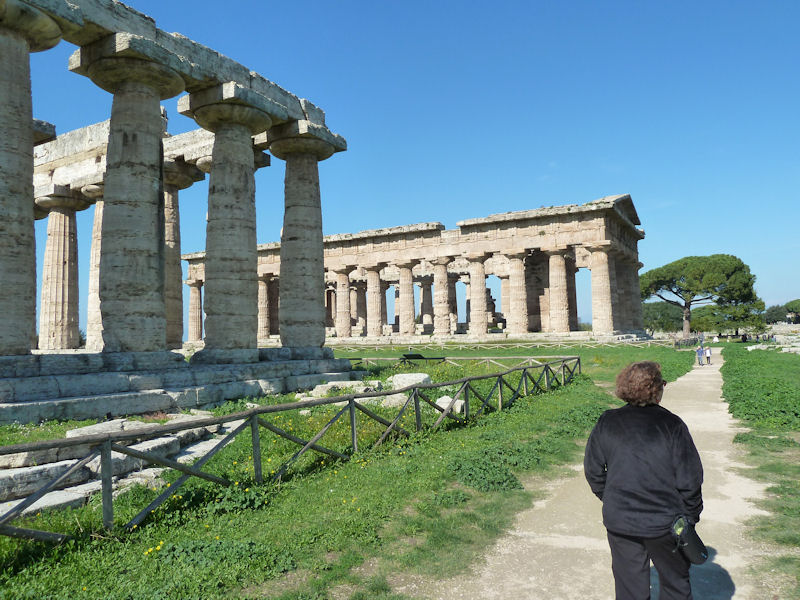
So successful was Sybaris that it sent out its own colonies, perhaps 25 in all, and we're presently in what was founded by Sybarites in about 600 B.C. as a trading station on the river Sele, called Poseidonia in honor of the sea-god Poseidon (or Neptune). What's now called the Temple of Hera, on the left, was built in 550-530 B.C., and the larger one in the background, dating from about 450 B.C., is called the 'Temple of Neptune' (now thought to have been dedicated to Zeus or Apollo) -- two of the best Doric temples still around.
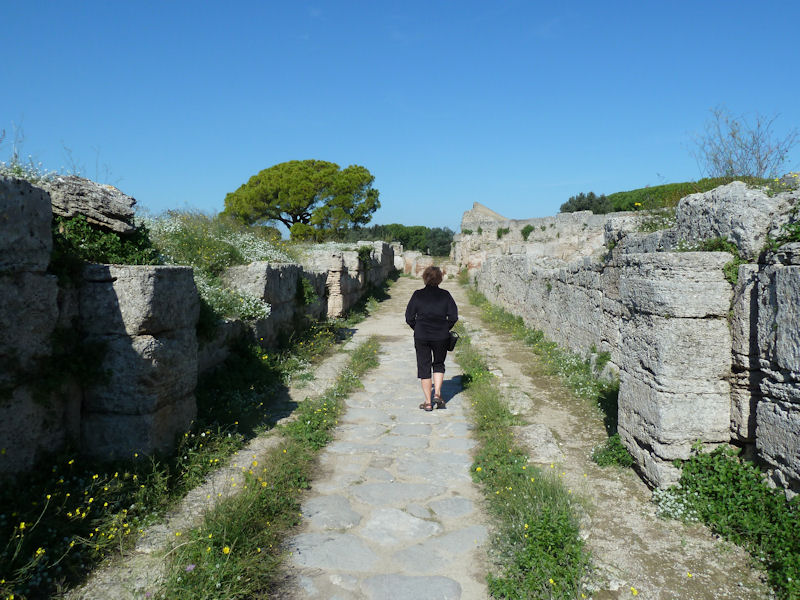
The Romans moved in (and changed the name to Paestum) in 273 B.C. as part of their takeover of Etruscan centres nearby to the north and their campaigns against the cities of Magna Graecia, after the Greeks' hired champion, Pyrrhus King of Epirus, won too many "pyrrhic victories" and left for easier wars.
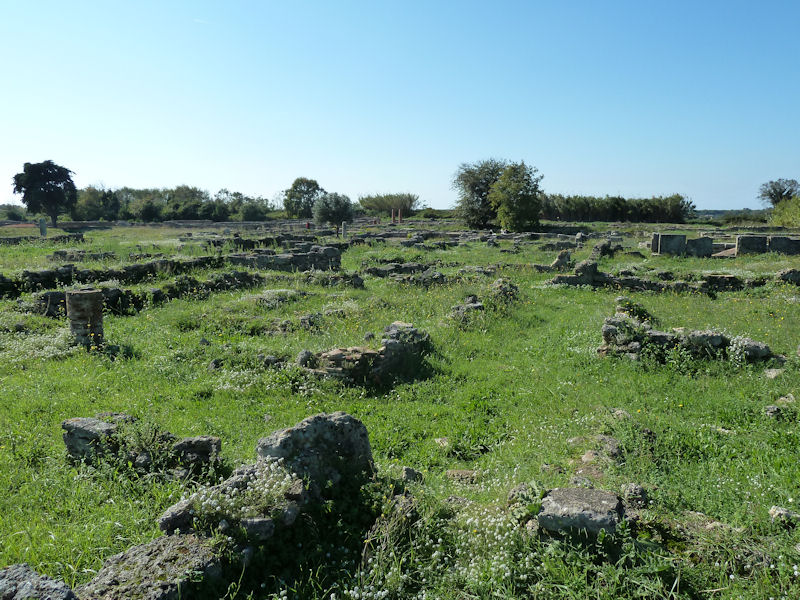
Paestum prospered during the Empire, but over time rising sea levels and local deforestation turned the plain into a swamp, and malaria drove everybody off to higher ground. The lowland area became uninhabitable by the 9th century, and the city lay under scrub vegetation until it was rediscovered and poked about in in the 18th century; serious excavations were begun in the 1950s.
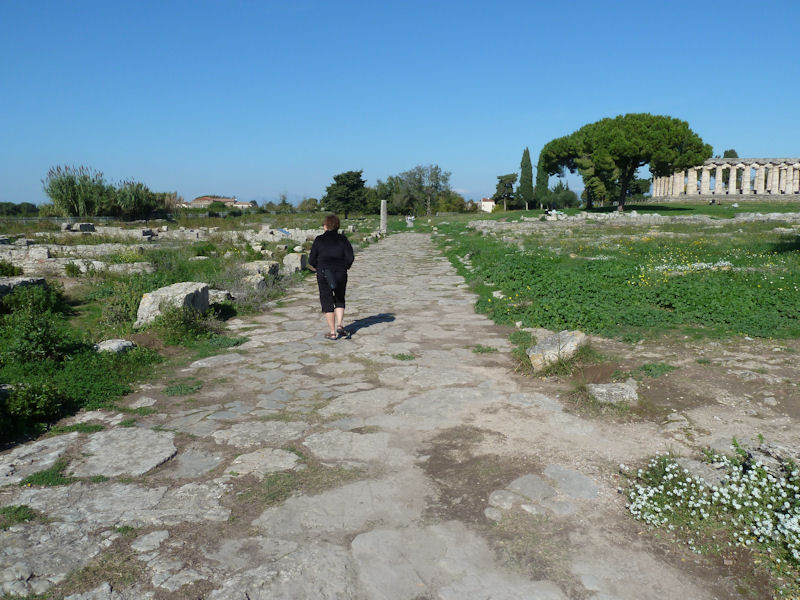
Kristin on the Via Sacra, where she belongs. We've passed the Roman-era Forum, built over the original Greek agora, and we're bound through residential districts for the third temple at the northern end of the city.

Much within the remaining city walls still hasn't been dug out yet, but this collection of residential blocks has recently been opened up.
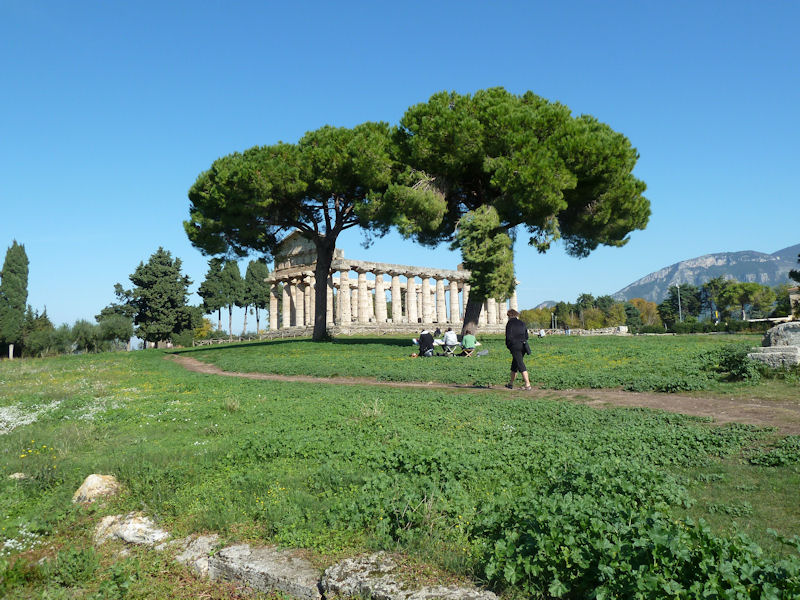
The so-called Temple of Ceres, now thought to have been dedicated to Athena, dates from about 500 B.C.

The classic temple is encircled by art students with their easels (with a computer, you could sketch one Doric column and replicate it 33 times, and hand it in for an A).
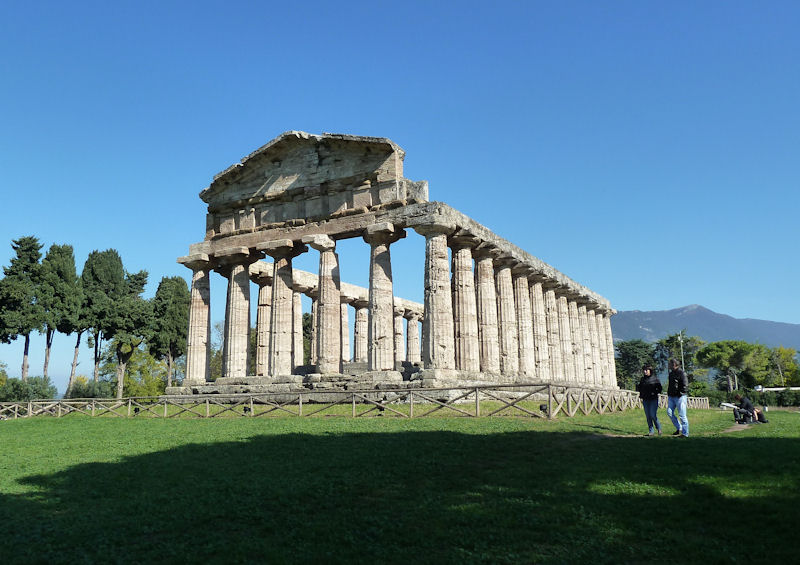
The Temple of Ceres, looking eastward

The goddess Athena's "Athenaion", from which presumably she officiated or advised on matters of philosophy, weaving and other crafts, the strategic side of war, civilization, wisdom, strength, justice and skill, and whatever else might come along, as required.
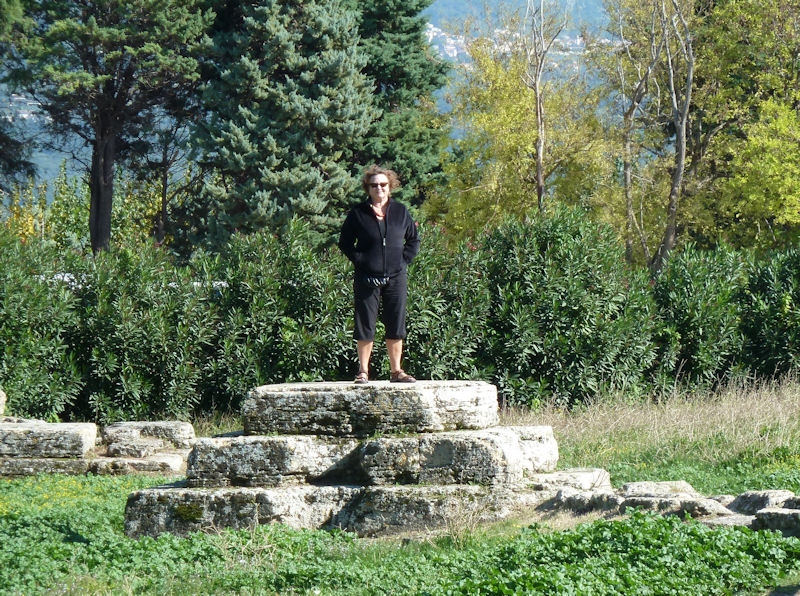
The monumental statue of the goddess. Remarkably well preserved.
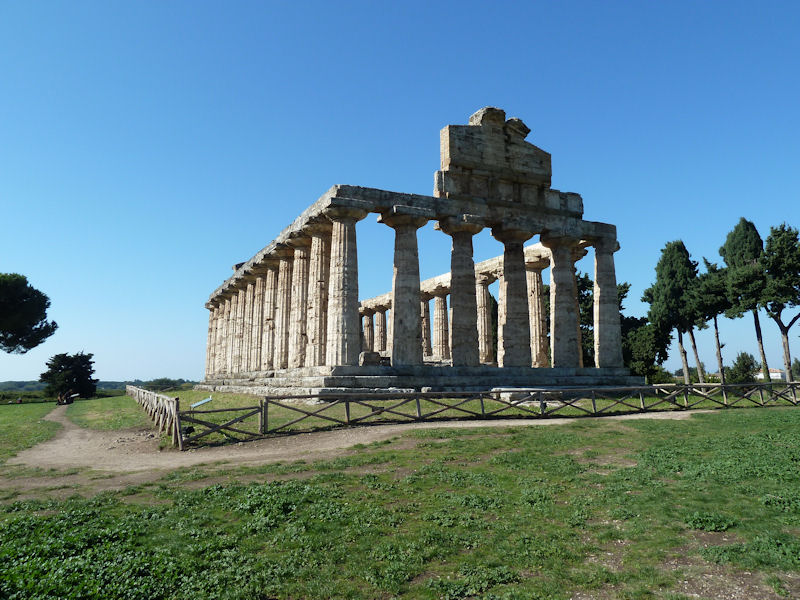
The eastern end of Athena's house, no longer occupied

This is thirsty work, and we're on our way over for a hasty lunch before we continue re-imagining the past. The superb archaeological museum is there, too, and that's where we're headed next, after a panino. And ice cream.
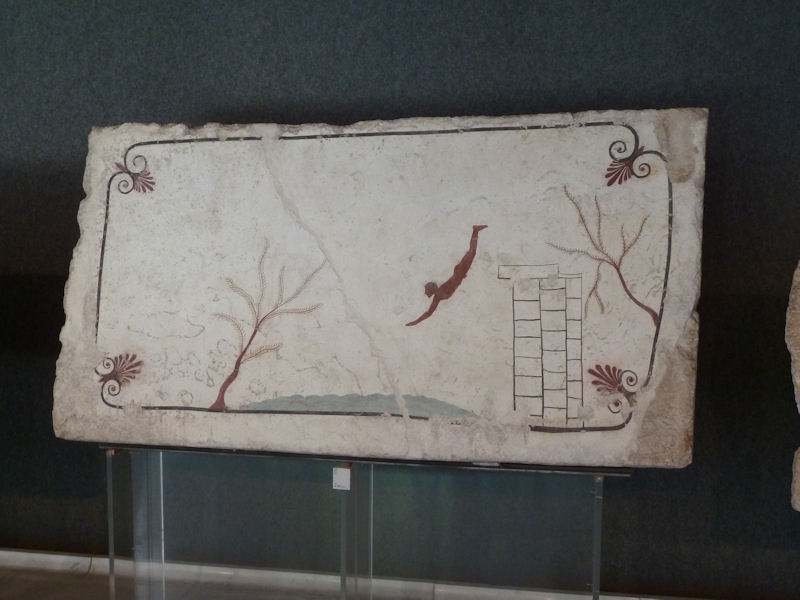
The museum has got serious tonnage of remains dug out of Paestum, but some of its best stuff comes from a sanctuary of Hera more recently found a few km off. This is the most famous piece, the fresco called "The Diver" from a tomb dating from 480 B.C. -- we're meant to believe that it represents the passage of the soul from life to the afterlife. Just an elegant swan dive into a foot of water and a concrete bottom, probably.

-- Well, drink up, boys, and we'll call for more wine.
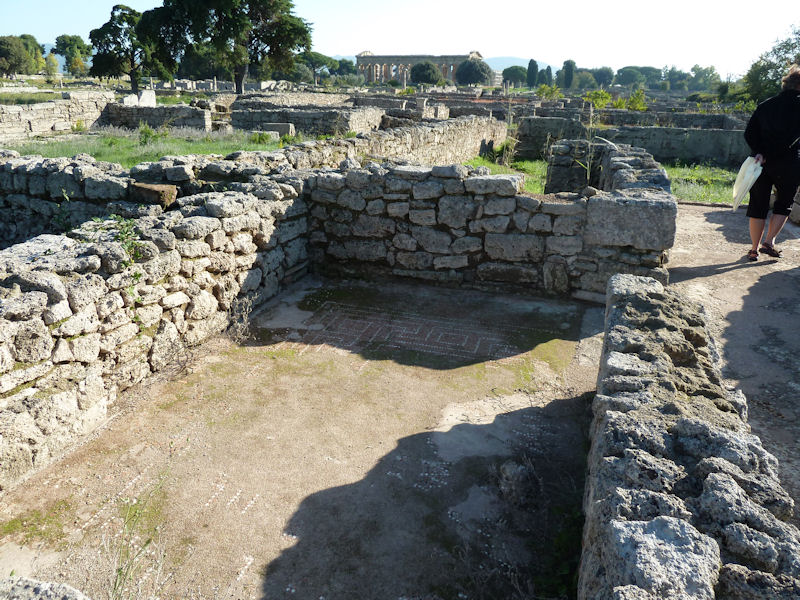
We're strolling about another residential section of the city, looking for mosaic floors and salamanders, and carrying the book about the Cilento region that the lunchroom man gave us.
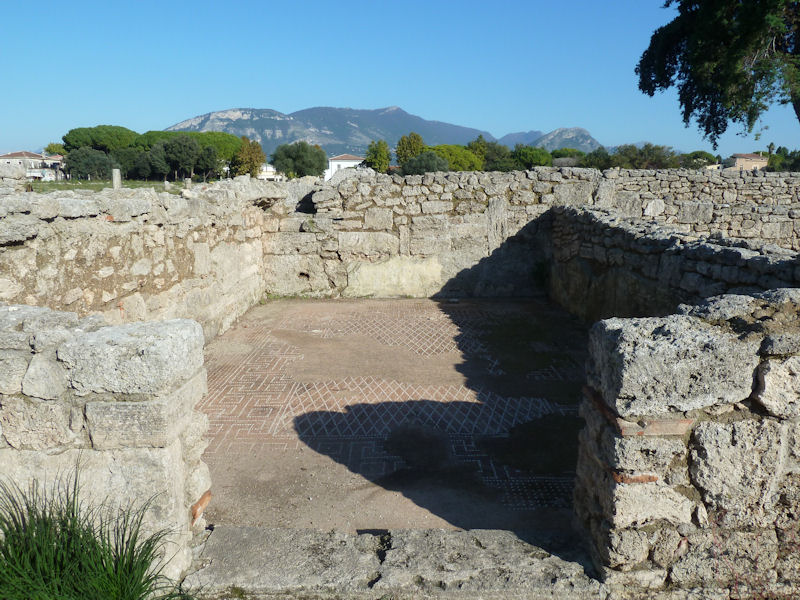
There are splendid old homes here, and very nice mosaic floors.

Another mosaic floor, or a salamander.

It's a salamander.

One of millions of salamanders that have succeeded the Greeks, the Lucanian Samnites, the Romans, the Saracen looters, and the anopheles mosquito as lords of Paestum. The US 36th Infantry Division stormed ashore here in 1943 and spent nine days teaching the Germans a lesson. The salamanders have persisted.
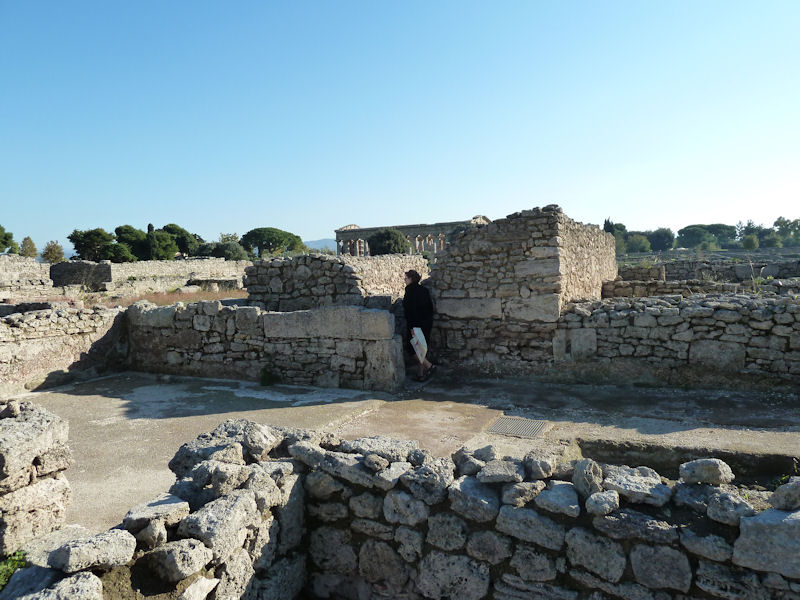
A fine floor with salamanders in the walls

Time to go. Two hours drive, and to avoid the nerve-twisting coast road beyond Salerno, Kristin's planning to drive back over the Latari mountain massif again.

Somebody's fancy impluvium in the foreground, the Temple of Neptune behind

Temple of Neptune

Another, west end

Another, very Doric

Another

A last zoom at the Temple of Ceres to the north

Goodbye to Paestum. Hello to winding roads at dusk in the Latari mountains, and a great dinner in Ravello, and tomorrow
. . . Capri.